Uncultured Swine Hi,
Can you smell that? Sort of smells like WD-40 mixed with hops, ball shapes, self-loathing and a deep hatred for women? It’s testosterone baby! and it’s everywhere post Adolescence. I personally remain unconvinced by the ‘manosphere’ mainly because, as an arty girl indoctrinated by the woke agenda, I like my m*n emaciated and limp. But maybe my uterus is just draining blood from my brain? Because - believe it or not - the manosphere has a modernist art movement, and that might yet persuade me of their cause.
I’m referring, of course, to the futurists. Sadly all the artists involved in this movement are dead (RIP) as it occurred in early 1900s, but their impact has apparently persevered. The impending conflict and urbanisation of the early twentieth century created a boon for fuel guzzling machines, manufacturing, and fast modes of transport, like trains and cocaine. Enamoured with these technological developments, Italian poet, Filippo Tommaso Marinetti, wrote a m*nifesto on what he’d like to do to machines, and machines to do to him.
Marinetti’s M*nifeste de fondation du Futurisme was published in 1909. The general sentiments behind his eleven principles for Futurism were: modernity, speed, automobiles and aggression = good. Old, institutional, naturalistic = bad. Makes sense given the historical context, no? Pretty reasonable maybe? To glean deeper understanding of Marinetti’s proposed revolution, I’ve included two of his more succinct principles below.
“9. We will glorify war – the only true hygiene of the world – militarism, patriotism, the destructive gesture of anarchist, the beautiful ideas that kill and the scorn of a woman.”
And then...
“10. We will destroy museums, libraries and fight against moralism, feminism and all utilitarian cowardice.”
Oh Marinetti, you are bad.
Though I read this and thought wow wouldn’t want to get stuck talking to this c*nt at a party, Italian m*n had a different reaction. The futurist movement was soon joined by prominent composers, sculptors and painters such as Umberto Boccioni, Carlo Carrà and Giacomo Balla, which frankly all sounds delicious.
In spite of the female hating/violence loving rhetoric, the futurist ideology isn’t their most bitter pill to swallow – the artistic output is. Because, unfortunately, it was brilliant. Balla’s Dynamism of a Dog on a Leash 1912 (above) is likely the most referenced futurist painting, and it’s easy to understand why. The piece is all movement: the little dog leggies, the lead, the skirt. Even if the subject matter is ironically feminine, it was a complete depiction of motion and fast paced urban environments.
And I still hold space for Unique Forms of Continuity in Space 1913 (above) by Balla’s pupil: Umberto Boccioni. At a time when cubists, Picasso and Braque, were focusing on static forms from multiple POVs to an angular result, Boccioni’s futurist interpretation is surprisingly fluid. The statues edges like waves being buffed by wind resistance. Boccioni went on to become the most influential futurist artist, which is a shame because he was probably the hottest.
Throughout futurisms ad hoc timeline, their aesthetic evolved to include two key elements: synesthesia and kinesthesia, which is breaking boundaries between different senses, and distinction between the body at rest and in motion, respectively. Futurists would do this by mimicking ‘chrono-photography’ such as Balla’s Girl Running on a Balcony (above), or Boccioni’s Dynamism of a Speeding Horse and House (below) in which:
“the effects of simultaneity and kinesthesia are produced by the mere juxtaposition of different materials and the degree of fragmentation to which they are presented.” - Foster, Krauss, Boid, Buchloh, Joselit.
Whatever the f*ck that means.
Now I don’t like gender binaries, but it is a scientific fact that m*n get more stupid in a group. The futurists expanded to write three more m*nifesto’s, have violent gatherings and adopt absurd rules such as celibacy that hotties like Boccioni took with a grain of salt. Female futurists did exist (girlies thought ‘crumb-maiden’ meant ‘provider of snacks’ </3). Painter, Marisa Mori, disliked women just enough to become a successful futurist, Marinetti himself allowing her to engage in an activity known as ‘aeropainting’.
Futurism’s perpetuation of violence was a problem that kind of sorted itself out. The movement lost traction in 1916, after Boccioni was killed by a horse during cavalry training, and another futurist, Sant’Elia, died in a WWI battle just after. Prominent members then decided they liked war etc. but didn’t think anyone would like, actually die? So when Marinetti started humping the leg of Italy’s fascist leader, Mussolini, who was humping the leg of the Nazi’s, ambivalent futurists yeeted and the movement sputtered.
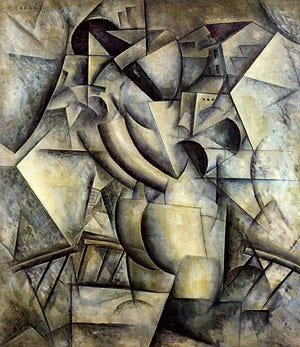
Taking stock of modernism’s only right-wing movement, I can see where it might’ve gone wrong. The futurists used cubism as a kernel, photography as inspiration, and the human body as a guide. Cubists were leftists, chrono-photography was commissioned by universities, then shown at galleries and museums, and the human body is naturalistic. You could say, futurism came from, and then relied on, the very things it aimed to abolish. So maybe, just maybe, they could’ve done away with the hating women and museums and just have, like, painted a f*cking dog on a leash?
Are you an Italian poet? Because baby, I think history’s rhyming.
It’s been a rattling couple of weeks we can all agree, and I’ve been finding a lot of solace? Wrong word - direction maybe, in art history. I’d strongly recommend reading The Lives of Lee Miller and The Lady in Gold, and this to watch. Objectively speaking, it’s all fascinating. Personally speaking, I’m not skipping dessert.
LOVE YAS AND TALK SOON NO SERIOUSLY LOVE YOU (and editor Grace)
Maggie Jeannnnnn xoxoxooxo


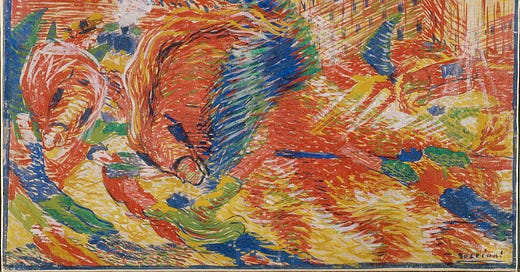



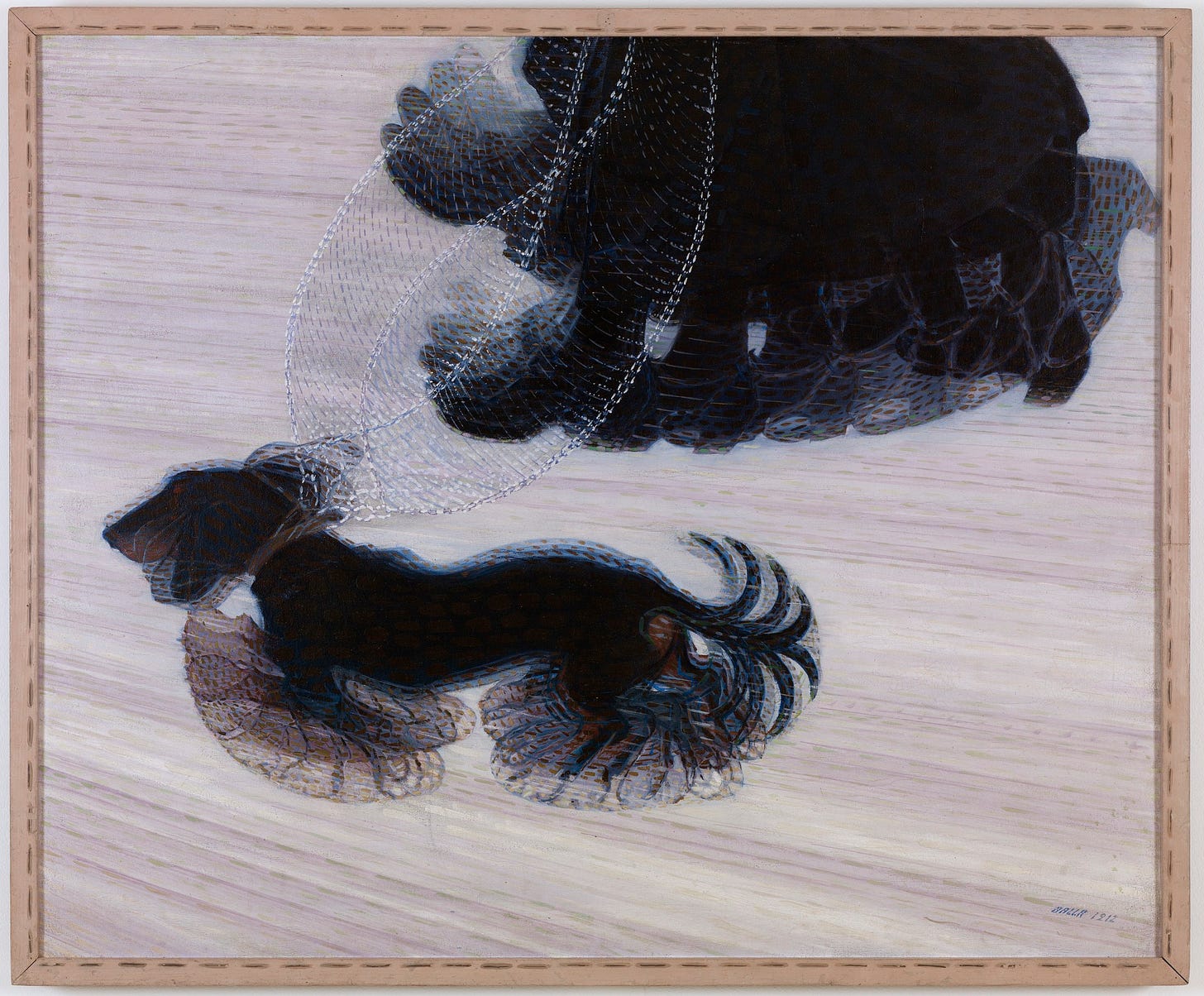
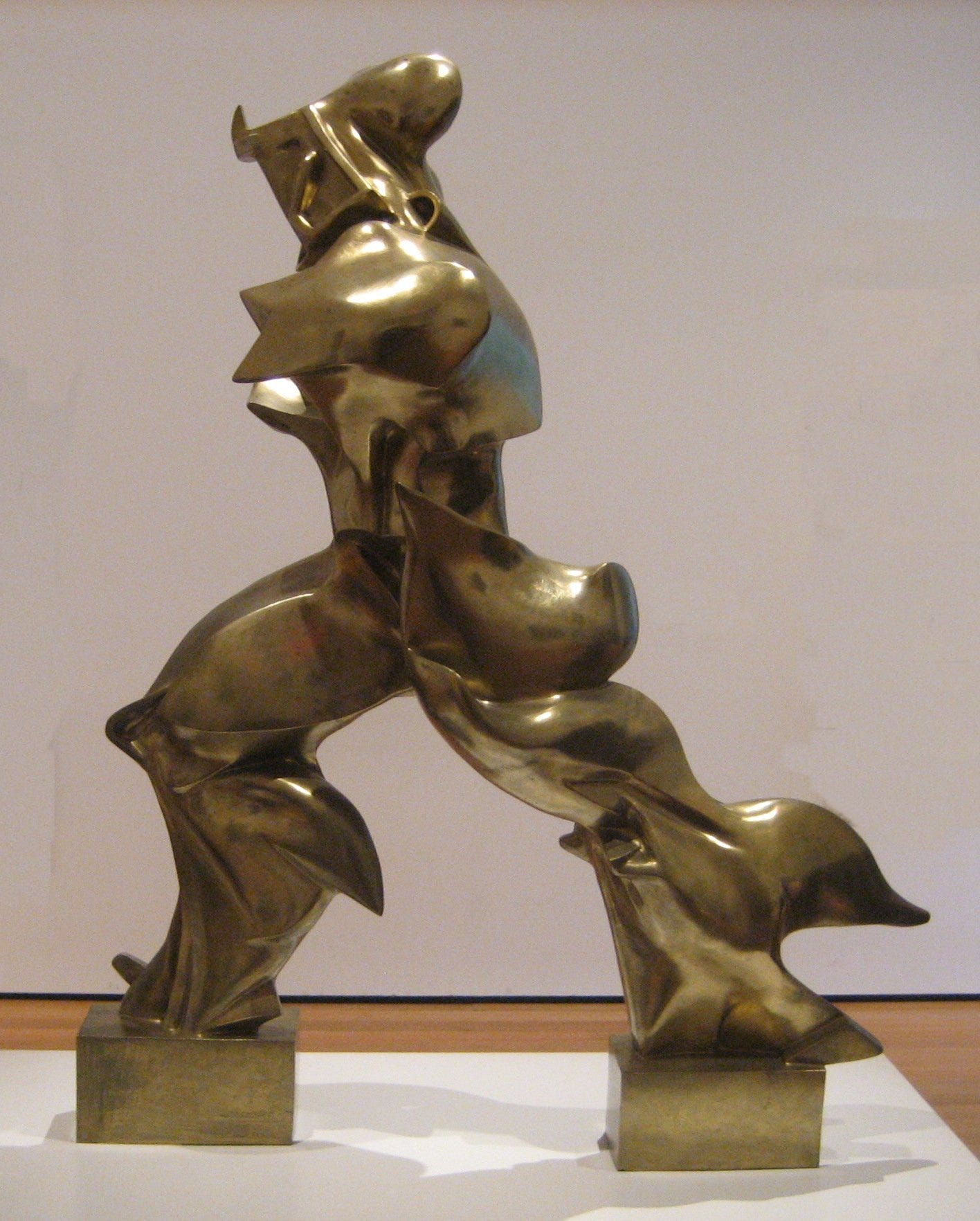
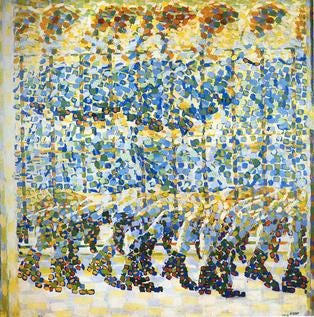
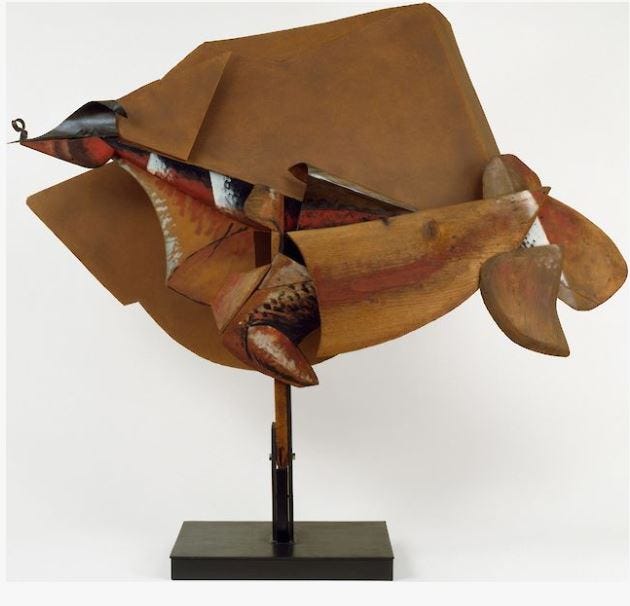
Holding (Unique Forms of Continuity in) Space.
Multiple chuckles, thank you.
You made me laugh out loud before I’d even finished my first cup of tea! Thanks Maggie. X